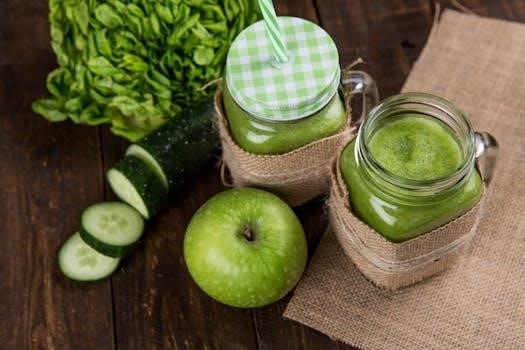Understanding Histamine Intolerance
Histamine intolerance occurs when the body struggles to break down histamine, a compound found in certain foods. This can result in various symptoms. It is important to note that many people have different tolerances, so it is important to tailor your approach.

What is Histamine Intolerance?
Histamine intolerance is not an allergy, but rather a condition arising from an imbalance between the histamine accumulated in the body and the capacity to break it down. Histamine, a vital chemical, plays several roles in the body, including immune responses, digestion, and neurotransmission. When the body can’t efficiently process this compound, often due to a deficiency in the diamine oxidase (DAO) enzyme, histamine levels rise. This can lead to a range of symptoms mimicking allergies, such as headaches, digestive issues, skin problems, and fatigue. The exact cause of this imbalance isn’t always clear, but factors like gut health, genetics, and certain medications can contribute. It’s essential to note that individual tolerance to histamine varies, meaning that what triggers symptoms in one person may not affect another. Managing this condition requires a careful approach, often involving dietary changes and lifestyle adjustments. Some individuals may be more sensitive to histamine liberators, while others react more strongly to histamine itself, highlighting the complexity of histamine intolerance.

The Low Histamine Diet
The low histamine diet is an approach that involves limiting high-histamine foods to help manage symptoms of histamine intolerance. This diet focuses on fresh, unprocessed foods while avoiding fermented, aged and certain other items.
Purpose of a Low Histamine Diet
The primary purpose of a low histamine diet is to reduce the overall histamine load in the body, thereby alleviating symptoms associated with histamine intolerance. By carefully selecting foods with low histamine levels and avoiding those that are high in histamine or act as histamine liberators, individuals can experience a reduction in symptoms such as headaches, skin rashes, digestive issues, and fatigue. This dietary approach is designed to provide relief and improve the quality of life for individuals struggling with histamine related sensitivities. This helps identify foods that may be triggering reactions and allows for the development of a more personalized eating plan. It also helps to stabilize the histamine levels and reduces the risk of adverse reactions. The diet acts as a diagnostic tool, helping to confirm whether symptoms are indeed related to histamine intolerance and not other conditions. Through a process of elimination and reintroduction, individuals can better understand their individual triggers and tolerances.
Foods to Avoid on a Low Histamine Diet
A low histamine diet requires avoiding certain food categories known to be high in histamine or to trigger its release. These typically include aged cheeses, fermented dairy products like yogurt and kefir, and fermented vegetables such as sauerkraut and kimchi. Processed meats, cured meats, and smoked fish are also high in histamine and should be limited or avoided. Some vegetables like tomatoes, spinach, and eggplant, and certain fruits like citrus fruits, strawberries, and avocados are often restricted due to their potential to release histamine in the body. Additionally, alcoholic beverages, especially red wine and beer, are best avoided. It is also advisable to limit foods with artificial additives and preservatives, as these can sometimes aggravate symptoms. Vinegar and vinegared foods are also high in histamine and should be avoided. It’s crucial to remember that food lists are guidelines, and individual tolerance levels may vary.

Low Histamine Food List
Navigating a low histamine diet involves understanding which foods are generally lower in histamine. This section will provide you with lists of foods that are considered compatible and those that should be avoided.
Low Histamine Food Categories
When exploring low histamine options, it’s helpful to categorize foods. Freshly cooked meats and poultry are generally well-tolerated, while aged or processed versions should be avoided. Freshly caught or frozen fish, such as hake, trout, and plaice, are better choices compared to those that are not. Eggs, especially the yolks, are usually acceptable; however, some may need to be careful with the whites. Most fresh fruits, excluding certain varieties like plantains, are considered low in histamine. For vegetables, a wide range of options such as zucchini, celery, artichoke, and lettuce are suitable. It is also important to focus on fresh herbs. Olive oil and coconut oil are good options for fats, while animal fats should be used with discretion. Remember that individual tolerance varies, so careful observation is essential. This is why it’s a good idea to work with a professional.
Foods with Lower Histamine Levels
When considering foods with lower histamine levels, it’s useful to focus on freshness and minimal processing. Freshly cooked meats, such as beef, chicken, and lamb, are generally well-tolerated. Opt for fresh or frozen fish like hake, trout, and plaice, ensuring they are prepared promptly. Most fresh vegetables, excluding those that are fermented, are good choices, including zucchini, celery, lettuce, and artichoke. A variety of fresh fruits, with the exception of some specific types, can be incorporated into your diet. Fresh herbs and olive oil are also considered low in histamine. Additionally, eggs, with a focus on the yolks, are usually safe. Remember, individual tolerance can vary, making careful observation essential. It’s also important to consider that any food can have varying histamine levels depending on freshness and preparation methods.
Foods with Higher Histamine Levels
Foods with higher histamine levels are often those that are aged, fermented, or processed. These include aged cheeses like cheddar and parmesan, as well as fermented dairy products such as yogurt, sour cream, and kefir. Fermented vegetables like sauerkraut and kimchi should be avoided. Additionally, processed meats and smoked fish are high in histamine. It’s important to note that certain types of seafood can accumulate histamine if not very fresh. Alcohol, especially red wine and beer, also falls under this category, as do some fruits like plantains. It is important to remember that the levels of histamine may vary based on factors such as storage and ripeness. Be mindful of these foods as they can trigger a reaction for those with histamine intolerance. It’s also helpful to know that the amount of histamine can vary across different sources.

Practical Considerations
Navigating a low histamine diet involves understanding your individual tolerance levels. Freshness and proper food preparation are also critical factors. Seeking guidance from professionals like dietitians is highly recommended. These factors are important for managing symptoms effectively.
Personal Threshold and Tolerance
It’s crucial to understand that histamine tolerance varies significantly from person to person. What might trigger symptoms in one individual may not affect another at all, highlighting the highly personalized nature of this condition. Your personal threshold is the amount of histamine you can tolerate before experiencing adverse reactions. This is not a fixed number but rather something that fluctuates over time. Factors like stress, sleep quality, and overall health can influence your tolerance level. Therefore, it’s important to monitor your reactions carefully after consuming different foods. This monitoring can be aided by keeping a food diary, logging what you eat and any symptoms you experience. It allows you to identify patterns and adjust your diet accordingly. It is also very important to remember that there is no such thing as a histamine-free diet. Initially, it is advisable to strictly adhere to a low-histamine diet to allow your system to calm down, then, once symptoms improve, you can start to expand your diet.
Importance of Freshness and Preparation
The freshness of food plays a crucial role in managing histamine levels. Histamine is produced when bacteria break down amino acids, particularly in proteins. Therefore, the longer food sits, the more histamine it accumulates. This is why freshly prepared meals are always preferable when following a low-histamine diet. Choosing fresh ingredients, avoiding leftovers, and ensuring prompt cooking can all contribute to lower histamine intake. Pay attention to food storage as well. Leftovers, if consumed at all, should be stored correctly and eaten quickly. Cleanliness in the kitchen is also paramount as this helps minimize bacterial growth. When selecting fish, always choose fresh or frozen options rather than those that have been sitting out. Regarding preparation methods, avoid any processes that might encourage histamine formation like fermentation. Opt for simple cooking methods that don’t require long periods, such as steaming, boiling, or light sauteing. Remember, the goal is to minimize the time food has to accumulate histamine before consumption.
Consulting Professionals
Navigating histamine intolerance can be complex, making professional guidance crucial. A registered dietitian or nutritionist specializing in food sensitivities can provide personalized dietary advice. They can help create a tailored low-histamine diet plan based on individual needs and tolerances. This is important, as every person’s threshold for histamine varies. A healthcare professional can also help rule out other conditions that mimic histamine intolerance, such as food allergies or mast cell activation syndrome. They can also assist in reintroducing foods after an elimination diet, ensuring proper nutritional balance. This guidance is essential, as low-histamine diets can be restrictive and might lead to nutritional deficiencies if not managed properly. They will be able to monitor your progress and make adjustments as needed. Consulting a doctor is also vital, as they can perform diagnostic tests and address any underlying conditions contributing to the intolerance. Working together, you, your doctor, and dietitian will form a team that makes a custom plan.